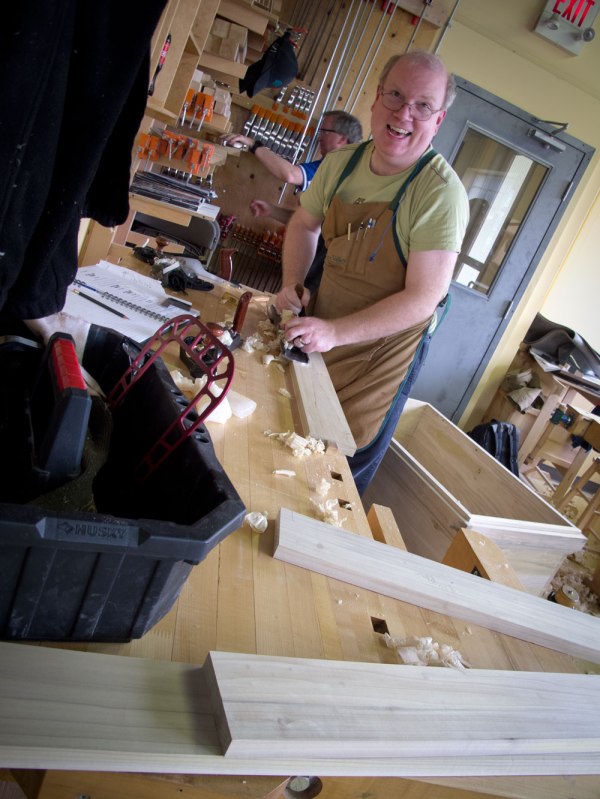
One of the most important things I’ve ever heard about woodworking was said to my by John Economaki, the founder of Bridge City Tools. When he said it, I couldn’t write it down – we were in a car, I think. But I can pretty well paraphrase it.
When I teach a class on design I ask the students this question: Would you rather build a project that is beautifully proportioned with a few gappy joints, or a technically flawless piece with a design that is just OK?
The students unanimously answer: technically flawless.
When you look at traditional furniture, you can see that this was not the general attitude among pre-industrial makers. Even in spectacular Shaker pieces and world-class objects I’ve examined at Winterthur, the emphasis is more on overall form than on technical brilliance.
Baselines are overcut. The backs and bottoms of drawers look like they came from an Arkansas outhouse. There is tear-out. There are distinct toolmarks – if you know where to look.
But when you back away from your inspection of the joinery, you can see the brilliance of the maker.
When I teach classes on woodworking, I fully realize that I am part of this problem. During my week here at Rosewood Studio we have all been focused on the joinery. Perhaps too much. What is more amazing than the tight joints, however, are the nine perfectly proportioned tool chests that are coming into the world.
This chest isn’t my design – it’s the design of hundreds of woodworkers through three hundred years of work. I only hope that the students can see this when they pull their chest out of their car at home.
— Christopher Schwarz
